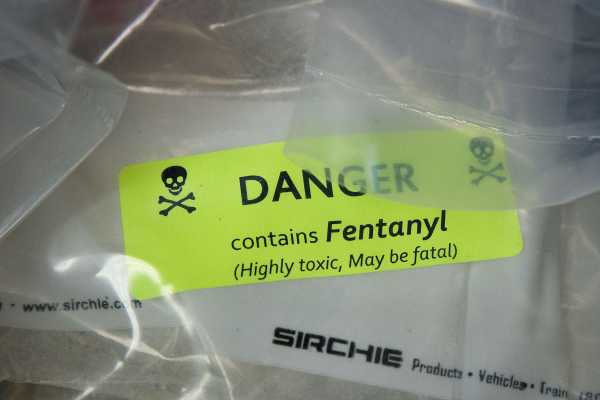

Finding the best ways to do good. Made possible by The Rockefeller Foundation.
For the first time in history, Americans are more likely to die from opioid overdoses than car crashes, according to a new report from the National Safety Council.
Based on 2017 data, people in the US have a 1 in 103 chance of dying in a motor vehicle crash over their lifetime, but a 1 in 96 chance of dying of an opioid overdose.
In comparison, a person has a 1 in 6 chance of dying of heart disease, a 1 in 7 chance of dying of cancer, a 1 in 285 chance of dying of a gun assault, a 1 in 1,117 chance of dying by drowning, a 1 in 188,364 chance of dying in a plane crash, and a 1 in 218,106 chance of getting killed by lightning.
According to the Centers for Disease Control and Prevention, the age-adjusted motor vehicle death rate hit 11.5 per 100,000 people in 2017, down from a recent peak of 15.2 in 2002.
Join the Vox Video Lab
Go behind the scenes. Chat with creators. Support Vox video. Become a member of the Vox Video Lab on YouTube today. (Heads up: You might be asked to sign in to Google first.)
By contrast, opioid overdose deaths — now largely driven by illicit fentanyl, a powerful synthetic opioid that’s spread in black markets for drugs — hit an age-adjusted rate of 14.9 per 100,000 in 2017, up from 2.9 in 1999.
Preliminary numbers for 2018 indicate that the overdose death rate may have leveled off earlier in the year, although that would still leave drug overdose deaths at record or near-record rates.
The opioid epidemic began in the 1990s, when pharmaceutical marketing and lobbying led doctors to prescribe far more opioid painkillers — leading to the first wave of overdose deaths as more people, including both patients and people who stole, bought, or borrowed painkillers from patients, misused the drugs and got addicted.
A second wave of drug overdoses took off in the 2000s when heroin flooded the illicit market, as drug dealers took advantage of a new population of people who used opioids but either lost access to painkillers or simply sought a better, cheaper high. And now the US is in the middle of a third wave, as fentanyl offers a more potent, cheaper — and deadlier — alternative to heroin.
There are real solutions to the opioid crisis
Public health and drug policy experts say there are solutions to the opioid crisis. First, America could dramatically expand access to addiction treatment — which, based on a 2016 surgeon general report, remains inaccessible to the bulk of people who need it. That should entail dramatically boosting access to medications like methadone and buprenorphine, which are considered the gold standard of treatment for opioid addiction and reduce the mortality rate among opioid addiction patients by half or more.
When France relaxed restrictions on doctors prescribing buprenorphine in response to its own opioid crisis in 1995, the number of people in treatment rose and overdose deaths fell by 79 percent over the following four years.
Beyond treatment, prescribers could also cut back on excess opioid painkiller prescriptions — to prevent more people from misusing the drugs, while still ensuring patients who truly need them get access. Harm reduction approaches, such as needle exchanges and more distribution of the opioid overdose antidote naloxone, would also help.
Several of the states that, based on state and federal data, saw overdose deaths drop or level off in 2017 took these kinds of steps.
Vermont saw its overdose death rate drop by around 6 percent in 2017 with the continued expansion of a hub and spoke system that integrates addiction treatment into the rest of health care. Rhode Island also saw a roughly 2 percent drop, as it implemented, among other changes, better access to opioid addiction medications in its prisons and jails. And Massachusetts saw a roughly 3 percent drop, along with a public health campaign that has emphasized more addiction treatment, including in emergency rooms, and fewer painkiller prescriptions.
These aren’t all huge decreases. But they’re significant because they’re in states in New England — which has been among the hardest hit regions by the opioid crisis, and has seen overdose deaths consistently increase in recent years. Public health interventions can also take time to take root, as more and more of the public learns the risks of addiction and that treatment is really available now.
A consistent problem for many states has been a lack of federal resources. Congress has increased funding for opioid addiction treatment here and there in recent years, but the money allocated so far falls very short of the tens of billions of dollars that experts say is necessary to fully and quickly confront the opioid epidemic. And despite lavish promises, President Donald Trump has done little to change that.
For more on the solutions to the opioid epidemic, read Vox’s explainer.
Sign up for the Future Perfect newsletter. Twice a week, you’ll get a roundup of ideas and solutions for tackling our biggest challenges: improving public health, decreasing human and animal suffering, easing catastrophic risks, and — to put it simply — getting better at doing good.
Sourse: vox.com






